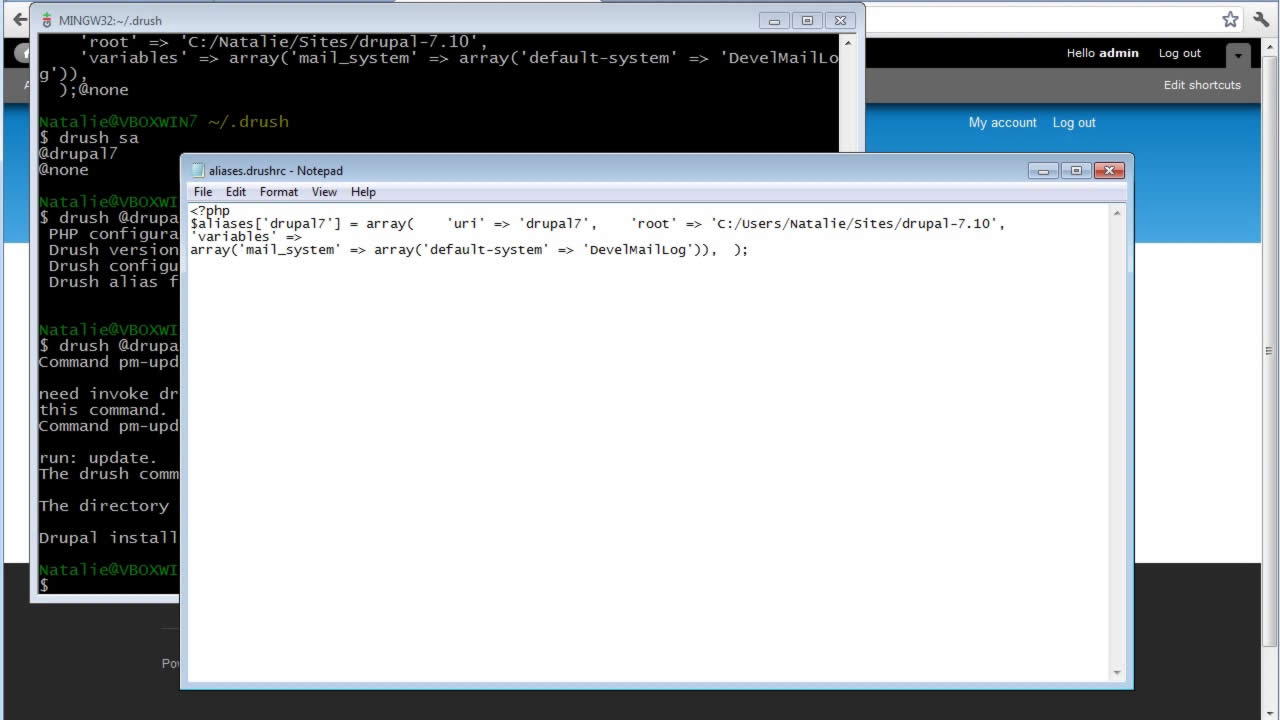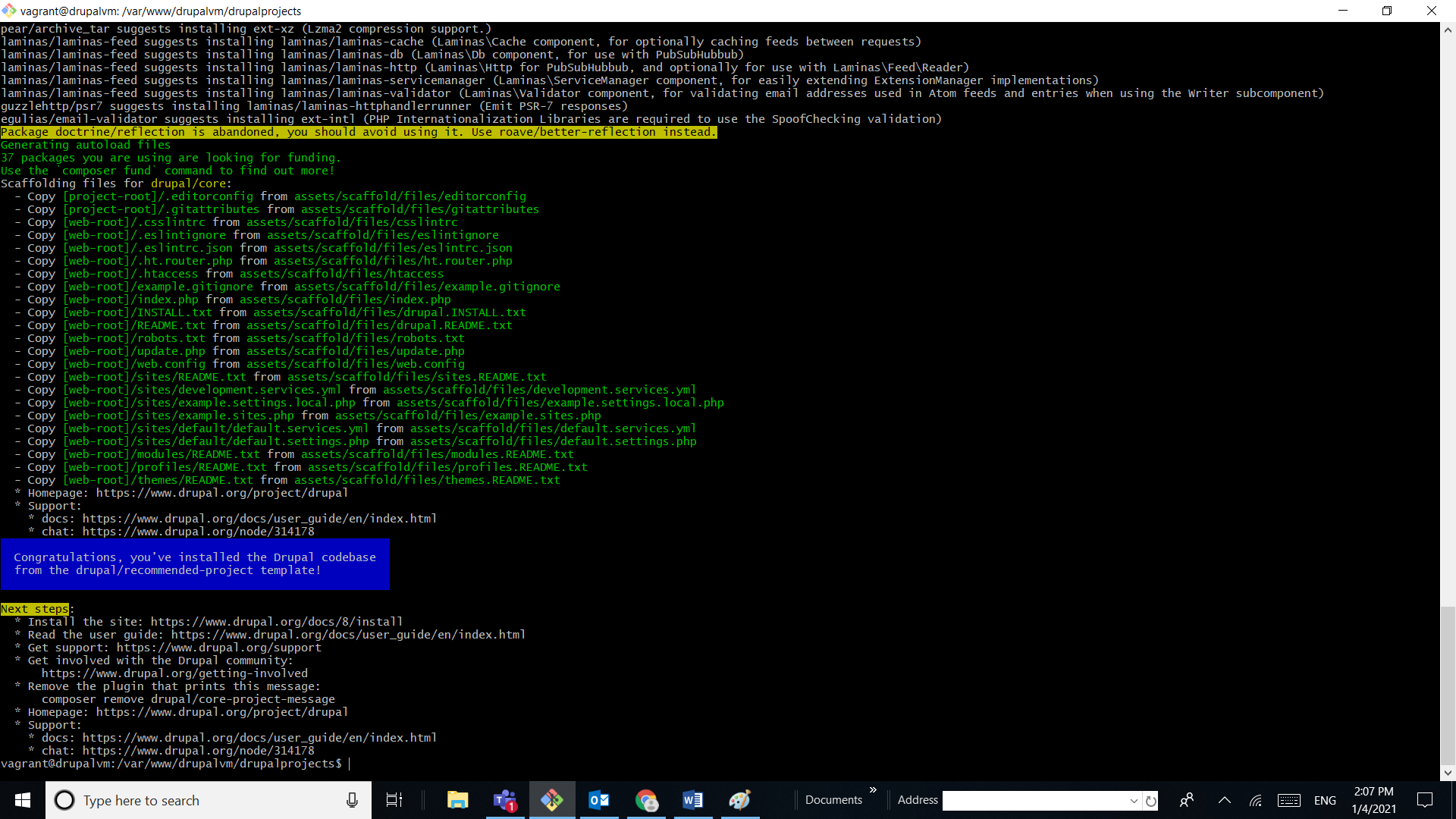
- #DRUSH DISABLE MODULE DRUPAL 9 HOW TO#
- #DRUSH DISABLE MODULE DRUPAL 9 INSTALL#
- #DRUSH DISABLE MODULE DRUPAL 9 CODE#
Legacy versions of drush have the “drush_invoke_process” command which was recently deprecated and replaced with the Drush::drush() command.
#DRUSH DISABLE MODULE DRUPAL 9 INSTALL#
Drush Install (code)ĭid you know you can call drush with PHP and then execute drush commands in your code? Well you can! I don’t really think you “should” (because Drupal ships with its own module installer service, see #10) BUT you “can” do it this way. Obviously this requires Drush to be present / installed and like #1 (enabling via the Admin UI) this is quite volatile as the module’s enabled state won’t survive a config import / sync unless you capture the config change. One of the most common “non-Drupal” core ways to turn on a module is drush pm-enable (or drush en). The install list will turn on a bunch of modules but will not make them dependencies (meaning that you can uninstall them later). This one is “similar” to #3 but has one significant difference. Same as #3 but in the profile’s info.yml.

Module DependencyĮvery module’s info.yml file can (and probably should) contain a dependencies key that makes your module reliant on “other modules.” When you turn on your module, your module will automatically enable all of those other dependencies. You can enable modules by adding them to this list and doing a config import / sync. If you are taking advantage of a configuration management strategy, all of your modules will get dumped out into a nicely formatted list in the file inside your config dump. It also is one of the most volatile ways of enabling a module since you are directly manipulating active configuration (and if you have a configuration management strategy in place, the next time you deploy config the module will get disabled again). While likely the “simplest” way on this list, it definitely isn’t the fastest.

Log in as an admin and go turn it on in the UI. I’m not sure all of them are “valid” but all of them work! You wouldn’t (or shouldn’t) use “all” of these methods on the same project. There are modules (like Config Split and Features) and there are tools (like Drush and Drupal Console) to consider.įinally, I recognize that many of these methods would supersede other methods on the list. I AM counting community contributions in this regard. We can safely assume that the modules are present when you go to enable them. downloading tar files or using composer).
#DRUSH DISABLE MODULE DRUPAL 9 CODE#
I am not counting any method of “adding modules to the code base” (e.g. It’s not my fault that 3 people could do the “same thing” in 3 totally different ways. HOWEVER there are duplicates on this list because that duplication exists in Drupal. Run the usual update.php, drush updb, drush cache:rebuild, etc.I 100% recognize as you read this list, there may be some things that you say “Now Mike, those are actually the same thing.” And I agree! There are duplicates on this list. running rm -rf module_name from that directory If for some reason, module folder gets retained in the /modules/contrib directory, you may now safely delete it now, e.g. Verify in /admin/modules/ module had been removed References to this module in composer.json and composer.lock should be removed, as well as the folder in the directory path (e.g. The functionality of the uninstalled module will now have been removed from the site. Go to the link manage>configuration>development>performance click on clear all cache.Step 4 will prompt you to confirm the module uninstall request.Click the Uninstall button at the bottom of the page.Check the box/boxes of modules that you want to uninstall.You can search or filter for the module to be uninstalled by typing the module name in the search field.In the Manage administrative menu, navigate to Extend > Uninstall tab ( admin/modules/uninstall) where you will find the list of enabled modules that are ready to be uninstalled.The uninstalled module will no longer show as checked in the module list and the functionality of the module will have been removed from the site.

Next, clear cache using the Drush command: Run the following Drush command to uninstall the module:
#DRUSH DISABLE MODULE DRUPAL 9 HOW TO#
To install Drush check How to install Drush. Pre-requisite: Drush should be installed on your machine. You can use either the Drush or the Administrative Interface to uninstall modules. In order to uninstall the module, be sure that the module is not being used on your site so that it does not impact any functionality.


 0 kommentar(er)
0 kommentar(er)
